There are two types of printers −
- Impact Printers
- Non-Impact Printers
Impact Printers
Impact printers print the characters by striking them on the ribbon, which is then pressed on the paper.
Characteristics of Impact Printers are the following −
- Very low consumable costs
- Very noisy
- Useful for bulk printing due to low cost
- There is physical contact with the paper to produce an image
Character Printers
Character printers are the printers which print one character at a time.
These are further divided into two types:
- Dot Matrix Printer(DMP)
- Daisy Wheel
Dot Matrix Printer
In the market, one of the most popular printers is Dot Matrix Printer. These printers are popular because of their ease of printing and economical price. Each character printed is in the form of pattern of dots and head consists of a Matrix of Pins of size (5*7, 7*9, 9*7 or 9*9) which come out to form a character which is why it is called Dot Matrix Printer.
A dot matrix printer (DMP) is a type of printer which uses pins impacting an ink ribbon to print. These printers are generally considered outdated, as they cannot create high-quality prints and are costly as well. However, they have a certain specialty that other printers like inkjet and laser printers do not have: as they use impact for printing, they can be used to print multiple copies of text at the same time with the help of carbon copying. Therefore, they are mostly used in places where multipart forms are required.
A dot matrix printer is also known as an impact matrix printer.
In a dot matrix printer, the characters and letters are formed by a matrix of dots. A print head, which has many pins in it, moves in the required direction and strikes against a cloth ribbon which is soaked in ink, making a mark on the paper. The dots are spaced closely in a particular shape to make the intended character. This looks quite similar to the printing mechanism of typewriters and daisy wheel printers. However, dot matrix printers are different in the sense that many different characters and graphics can be printed. A character printed by a DMP is actually an accumulation of many such dots on a small area of the paper.
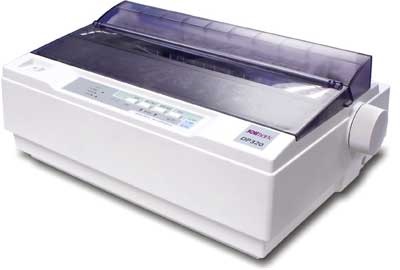
Advantages
- Inexpensive
- Widely Used
- Other language characters can be printed
Disadvantages
- Slow Speed
- Poor Quality
Daisy Wheel Printer
Head is lying on a wheel and pins corresponding to characters are like petals of Daisy (flower) which is why it is called Daisy Wheel Printer. These printers are generally used for word-processing in offices that require a few letters to be sent here and there with very nice quality.
A type of printer that produces letter-quality type. A daisy-wheel printer works on the same principle as a ball-head typewriter. The daisy wheel is a disk made of plastic or metal on which characters stand out in relief along the outer edge. To print a character, the printer rotates the disk until the desired letter is facing the paper. Then a hammer strikes the disk, forcing the character to hit an ink ribbon, leaving an impression of the character on the paper. You can change the daisy wheel to print different fonts.
Daisy-wheel printers cannot print graphics, and in general they are noisy and slow, printing from 10 to about 75 characters per second. As the price of laser and ink-jet printers has declined, and the quality of dot-matrix printers has improved, daisy-wheel printers have become obsolete.
Daisy wheel printing is an impact printing technology invented in 1970 by Dr Andrew Gabor at Diablo Data Systems. It uses interchangeable pre-formed type elements, each with typically 96 glyphs, to generate high-quality output comparable to premium typewriters such as the IBM Selectric, but two to three times faster. Daisy wheel printing was used in electronic typewriters, word processors and computers from 1972. The daisy wheel is considered to be so named because of its resemblance to the daisy flower.
By 1980 daisy wheel printers had become the dominant technology for high-quality text printing. Dot-matrix impact, thermal, or line printers were used where higher speed or image printing were required and poor print quality was acceptable. Both technologies were rapidly superseded for most purposes when dot-based printers—in particular laser printers—that could print any characters or graphics, rather than being restricted to a limited character set, became able to produce output of comparable quality. Daisy wheel technology is now found only in some electronic typewriters.
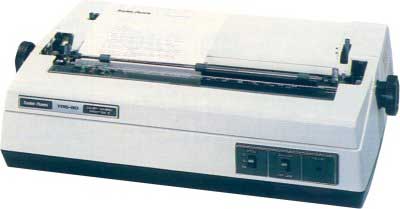
Advantages
- More reliable than DMP
- Better quality
- Fonts of character can be easily changed
Disadvantages
- Slower than DMP
- Noisy
- More expensive than DMP
Line Printers
Line printers are the printers which print one line at a time.
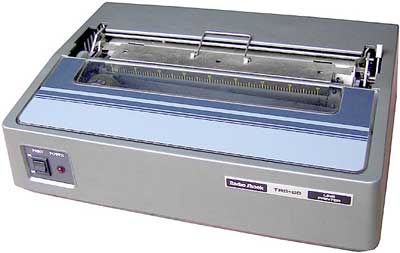
These are of two types −
- Drum Printer
- Chain Printer
Drum Printer
This printer is like a drum in shape hence it is called drum printer. The surface of the drum is divided into a number of tracks. Total tracks are equal to the size of the paper, i.e. for a paper width of 132 characters, drum will have 132 tracks. A character set is embossed on the track. Different character sets available in the market are 48 character set, 64 and 96 characters set. One rotation of drum prints one line. Drum printers are fast in speed and can print 300 to 2000 lines per minute.
An impact printer in which a complete set of characters for each print position on a line is on a continuously rotating drum behind an inked ribbon, with paper in front of the ribbon; identical characters are printed simultaneously at all required positions on a line, on the fly, by signal-controlled hammers.
A wide-format inkjet printer. The paper is taped onto a drum for precise alignment to the nozzles.
An old line printer technology that used formed character images around a cylindrical drum as its printing mechanism. When the desired character for the selected position rotated around to the hammer line, the hammer hit the paper from behind and pushed it into the ribbon and onto the character.
Advantages
- Very high speed
Disadvantages
- Very expensive
- Characters fonts cannot be changed
Chain Printer
In this printer, a chain of character sets is used, hence it is called Chain Printer. A standard character set may have 48, 64, or 96 characters.
Advantages
- Character fonts can easily be changed.
- Different languages can be used with the same printer.
Disadvantages
- Noisy
Non-impact Printers
Non-impact printers print the characters without using the ribbon. These printers print a complete page at a time, thus they are also called as Page Printers.
These printers are of two types −
- Laser Printers
- Inkjet Printers
Characteristics of Non-impact Printers
- Faster than impact printers
- They are not noisy
- High quality
- Supports many fonts and different character size
Laser Printers
These are non-impact page printers. They use laser lights to produce the dots needed to form the characters to be printed on a page.
A laser printer is a printer for computers. It uses laser or LED-technology to get small particles of toner from a cartridge onto paper. Very often, this costs less to use than the ink of inkjet printers. Laser printers often print text more neatly than inkjet printers, but print photos less clearly. Printing on photo paper or coated paper designed for inkjet printers can damage the laser printer's drum and fuser unit.
The laser printer was first invented by a team at Xerox in 1969. The first laser printer was called the Xerox 2000.
Laser printing is a process which typically involves seven steps:
Raster Image Processing:
the processor inside the printer converts the data to be printed from its current file format, into a bitmap of the page to be printed - this is then stored in raster image memory.
Charging:
An electrostatic charge is then projected onto a revolving photosensitive drum inside the printer.
Writing:
A laser beam is directed at a rotating polygonal mirror, which redirects the beam onto the photosensitive drum. The rasterized data in memory is now read, and used to control whether the laser is on or off, as the beam sweeps across the drum - where the laser beam strikes the drum the charge is reversed, creating a latent electrical image on the surface. Some laser printers use an array of tiny LEDs instead of a sweeping laser beam.
Developing:
The surface of the drum is then exposed to negatively charged particles of toner, which are attracted to the areas where the laser wrote the latent electrical image. The toner will be repelled by the negative charge on areas of the drum where the laser beam did not strike, and hence remove the charge.
Transferring:
The drum is now rolled over paper, transferring the image from the drum to the paper (to aid in this process there is a positively charged roller behind the paper, which pulls the toner off the drum and onto the paper).
Fusing:
The paper is then passed through a fuser, where rollers provide heat and pressure to bond the toner to the paper.
Cleaning:
An electrically uncharged blade and a discharge lamp remove any toner and all the charge remaining on the drum (this will all happen in one revolution of the drum).
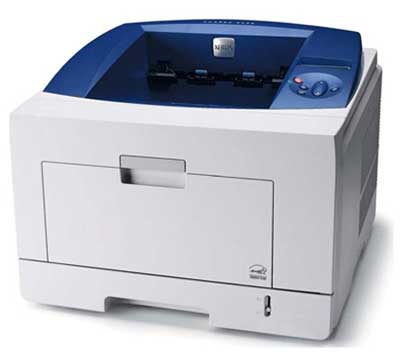
Advantages
- Very high speed
- Very high quality output
- Good graphics quality
- Supports many fonts and different character size
Disadvantages
- Expensive
- Cannot be used to produce multiple copies of a document in a single printing
Inkjet Printers
Inkjet printers are non-impact character printers based on a relatively new technology. They print characters by spraying small drops of ink onto paper. Inkjet printers produce high quality output with presentable features.
An inkjet printer is a computer peripheral that produces hard copy by spraying ink onto paper. A typical inkjet printer can produce copy with a resolution of at least 300 dots per inch ( dpi ). Some inkjet printers can make full color hard copies at 600 dpi or more. Many models include other devices such as a scanner , photocopier , and dedicated fax machine along with the printer in a single box.
In the inkjet printing mechanism, the print head has several tiny nozzles, also called jets. As the paper moves past the print head, the nozzles spray ink onto it, forming the characters and images. An inkjet printer can produce from 100 to several hundred pages, depending on the nature of the hard copy, before the ink cartridges must be replaced. There is usually one black ink cartridge and one so-called color cartridge containing ink in primary pigments (cyan, magenta, and yellow). Some inkjet printers use a single cartridge with cyan, magenta, yellow, and black ink. A few models require separate cartridges for each primary pigment, along with a black ink cartridge.
The principal advantage of inkjet printers is the fact that most of them are inexpensive. Inkjet printers are often given away at computer superstores along with the purchase of a personal computer or substantial peripheral. Even the cheapest inkjet printers are satisfactory for most of the needs of personal computer users. High-end inkjet printers can render digital images on special paper, with quality rivaling that of professionally produced glossy or matte photographs. Another advantage of inkjet printers is their light weight and modest desktop footprint . Many models are easy to transport, and are preferred by traveling salespeople for this reason alone.
The copy from an inkjet printer needs a little time to dry. Adequate drying time is especially important if the hard copy contains large regions of solid black or color. Inkjet printers also require non-porous paper. In bond paper containing cotton or other fibers, the ink may bleed along the fibers. Paper designed especially for inkjet printers is heavier than the paper used with laser printer s or photocopiers (24 pound vs 20 pound), has higher brilliance (it's "whiter"), and is somewhat more expensive. Another limitation is the fact that most inkjet printers are slow and they are not designed for high-volume print jobs. While the initial cash outlay for an inkjet printer may be modest (or zero), this type of printer is expensive to operate over time compared with a laser printer. When it is necessary to make hundreds of copies per day or thousands of copies per week, an office quality laser printer is a better choice.
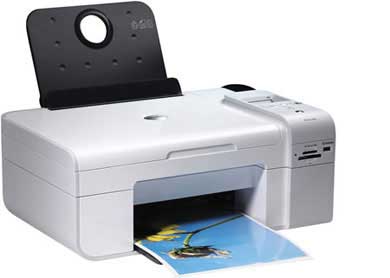
They make less noise because no hammering is done and these have many styles of printing modes available. Color printing is also possible. Some models of Inkjet printers can produce multiple copies of printing also.
Advantages
- High quality printing
- More reliable
Disadvantages
- Expensive as the cost per page is high
- Slow as compared to laser printer




No comments:
Post a Comment